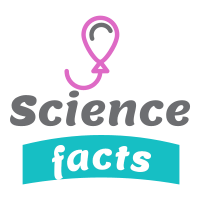How many humans have been into space?
- Russia, the United States, and china. The moon is the farthest destination that any human has been in space.
The Russian Astronaut was the first human in space. He traveled once around Earth in Vostok 1 on 12 April 1961 in 108 minutes.
On 16 June 1963, The Russians become the first woman in space. She made 48 orbits of Earth in 71 hours.
The first person to walk on the Moon, on 21 July 1969, said "that's one small step for man, one giant leap for mankind."
4. Alexa Leony
On 18 March 1965, Leonov become the first person to spacewalk. Attached to a tether, he walked in space for a total of 10 minutes.
5. Dennis Tito
American Dennis Tito paid US$20 million to become the first space tourist on 28 April 2001, in seven days he orbited Earth 128 times.
Where did they go?
- Most astronauts have traveled only far as a few hundred kilometers above Earth.
- The first astronauts were launched inside a capsule. They sat in the nose part of a rocket. Once above the ground, the rocket fell away, and the astronauts inside the capsule began their orbits of the earth.
- Today, astronauts are launched by rocket or space shuttle, and the majority are delivered to the International Space Station (ISS).
- Twenty-six astronauts have traveled to the moon and back, and 12 of these have walked on the Surface of the Moon.
Astronaut Wanted
The European Space Agency enrolls candidates with the following attributes. When they last advertised, in June 2016, 10,884 people applied.
- Age Range: 27 to 37 yrs
- Height: 153cm-190cm
- Language: Speak and read English
- Education: University degree or equivalent in a science-based subject
- Health: Good or normal weight, mentally sound
- Personal Qualities: Good Reasoning, Capability, and memory, high motivation, flexibility, emotional stability, manual dexterity
- Extra Assets: Flying experience, speaking Russian
How to: Fix the Hubble Space Telescope?
01. Get Suited up, then pick up the new telescope part and your tools for fixing it in place.
02. With your feet and back attached to the space shuttle's robotic arms, move into position.
03. A second astronaut attached to a tether uses a screwdriver to remove an old part.
04. Use your helmet light to see as you install the new part. Helmet cameras record every move.
05. Job Done. Once you are both back inside the space shuttle, release the telescope into its orbit.
What's in a name?
The word astronaut comes from the Greek for"star" and"sailor", and it's used to describe all space travelers. Russian space travelers are called cosmonauts, Chinese taikonauts.
What about me?
Do you want to go into space? For us$200,000 you can book a seat on SpaceOneShip for a 100 km altitude, edge-of-space trip in 2018, to experience about six minutes of weightlessness.
Like father, like son
Russian Alexander Volkov First flew into space in 1985. His son, Sergei Volkov followed in his footsteps when he flew to the International Space Station in April 2008.
RECORD BREAKER
On 11 March 2001, US astronauts Susan Helmes and Jim Voss spent 8 hours and 56 minutes working outside the International Space Station, the longest period of extravehicular activity to date.
How to space affects the human body?
01: Nearly all astronauts experience space sickness soon after entering space.The symptoms, such as headaches, nausea, and vomiting, last for only a day or two.
02: Body fluids rise to your head and give you head and give you a head cold, stuffy nose, and puffy face.
03: Less fluid in the lower body results in a smaller leg circumference called "bird legs".
04: The heart shrinks because it does work so hard in space.




















.jpg)


